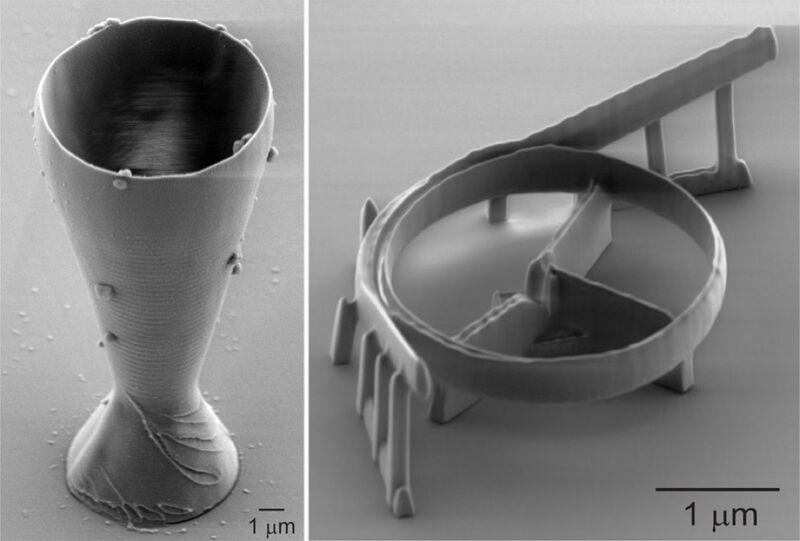This is the world’s smallest 3D-printed wineglass, Swedish scientists claim

Enlarge / The world's smallest 3D-printed wineglass in silica glass (left) and an optical resonator for fiber optic telecommunication, photographed with scanning electron microscopy. The rim of the glass is smaller than the width of a human hair. (credit: KTH Royal Institute of Technology)
A team of Swedish scientists has developed a novel 3D-printing technique for silica glass that streamlines a complicated energy-intensive process. As a proof of concept, they 3D-printed the world's smallest wineglass (made of actual glass) with a rim smaller than the width of one human hair, as well as an optical resonator for fiber optic telecommunications systems-one of several potential applications for 3D-printed silica glass components. They described their new method in a recent paper in the journal Nature Communications.
The backbone of the Internet is based on optical fibers made of glass," said co-author Kristinn Gylfason of the KTH Royal Institute of Technology in Stockholm. "In those systems, all kinds of filters and couplers are needed that can now be 3D printed by our technique. This opens many new possibilities."
Silica glass (i.e., amorphous silicon dioxide) is one material that remains challenging for 3D printing, particularly at the microscale, according to the authors, though several methods seek to address that challenge, including stereolithography, direct ink writing, and digital light processing. Even those have only been able to achieve feature sizes on the order of several tens of micrometers, apart from one 2021 study that reported nanoscale resolution.